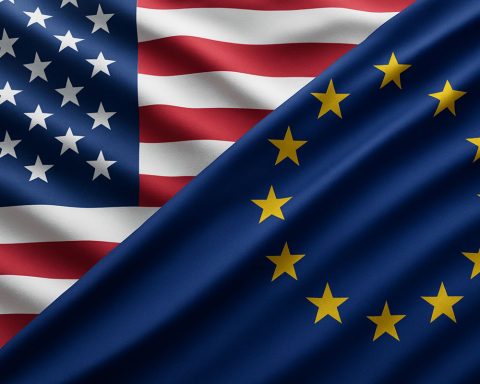NVIDIA has announced a $1 billion equity investment in Finland’s Nokia, acquiring nearly 3% of the company. Beyond the numbers, this is a clear signal of NVIDIA’s intent to extend its influence from data centers into the global telecom infrastructure that will power the next generation of AI connectivity.
NVIDIA takes a $1 billion stake in Nokia
In late October, NVIDIA Corporation (NASDAQ: NVDA) revealed plans to acquire 166 million newly issued Nokia shares at $6.01 per share, marking a $1 billion investment and a 2.9% stake in the Finnish telecom equipment maker.
The move accompanies a strategic partnership agreement designed to accelerate joint development of AI-RAN (Artificial Intelligence Radio Access Network) technologies and 5G-Advanced / 6G network solutions.
Following the announcement, Nokia’s shares surged by more than 20% across global exchanges — a clear reflection of investor optimism about the alliance between the world’s leading AI chipmaker and one of Europe’s major telecom players.
(Sources: Reuters, Financial Times, Nokia.com)
NVIDIA’s long-term strategy: embedding AI into the network itself
For Nokia, this capital injection represents both a technological boost and a credibility milestone — an endorsement by a company at the heart of the global AI revolution.
For NVIDIA, the investment is not merely financial; it’s a deliberate step toward blending compute and connectivity — where the network itself becomes a distributed computing platform.
“The future of AI will not reside only in cloud data centers but will extend to the network edge — where data is generated, transmitted, and acted upon,” note analysts at TechRadar Pro and Data Centre Magazine.
Through this alliance, NVIDIA gains privileged access to the global telecom infrastructure and direct exposure to operator networks — a crucial foothold for integrating AI computation within the fabric of future mobile systems.
Editorial insight: NVIDIA’s intentions run deeper
From a business perspective, NVIDIA’s $1 billion bet on Nokia can be read as part of a broader geopolitical and technological strategy.
1️⃣ AI + Network = The next computing layer
By embedding AI processing into radio and network components, NVIDIA aims to dominate not just the “brains” of AI (GPUs) but also its “nervous system” — the vast web of connected devices and data flows.
2️⃣ A European foothold
Investing in Nokia — a cornerstone of European telecom heritage — allows NVIDIA to secure presence and credibility in a region where infrastructure is heavily regulated and strategically protected.
It also balances competition against Chinese player Huawei and Swedish rival Ericsson, both vying to shape the 6G landscape.
3️⃣ The race to 6G
6G is expected to merge ultra-fast connectivity with real-time AI inference. By aligning early with Nokia, NVIDIA positions itself to become the default compute provider for next-gen networks.
4️⃣ Strategic signaling
For Nokia, NVIDIA’s backing means access to advanced AI chips and frameworks — a chance to reposition itself as an AI-driven infrastructure innovator, rather than a traditional network vendor.
Implications for Europe and the global market
- For telecom operators: expect AI-enabled base stations and smarter network automation, improving efficiency and reducing latency.
- For European policymakers: the deal signals that transatlantic AI-telecom partnerships will shape the continent’s technological sovereignty.
- For investors: the convergence of AI and connectivity may define the next decade’s growth engine — blurring the lines between chips, software, and infrastructure.
Global Competitive Landscape: How Ericsson and Huawei respond
The NVIDIA–Nokia partnership instantly reconfigures the competitive balance within the telecom industry, particularly as the race toward AI-driven 6G infrastructure accelerates.
Ericsson: cautious alignment with cloud ecosystems
Sweden’s Ericsson has been strengthening its collaborations with Google Cloud and Amazon Web Services, focusing on virtualized network cores and Open RAN.
However, compared with Nokia’s direct alignment with NVIDIA, Ericsson’s strategy appears more fragmented — centered on cloud hosting rather than AI computation itself.
Without a deep hardware–AI collaboration, Ericsson risks falling behind in the emerging “AI-RAN” paradigm, where processing and algorithmic optimization drive network performance.
Huawei: developing its own AI-telecom ecosystem
China’s Huawei follows an independent route, embedding AI engines directly into its base stations and leveraging HiSilicon’s Ascend AI chips.
While technologically advanced, Huawei faces restricted access to Western markets, which pushes it to focus on Asia and Global South regions, building a self-sufficient 6G ecosystem.
Nokia + NVIDIA: Europe’s strategic response
Against this backdrop, the Nokia–NVIDIA alliance emerges as Europe’s counterweight in the global AI-telecom race.
By combining Nokia’s telecom expertise with NVIDIA’s AI and chip supremacy, Europe asserts its role not just as a market, but as a co-architect of the intelligent connectivity era.
Business Catalog View
The 2020s are witnessing a profound convergence between chipmakers, network builders, and AI developers — each vying to define the architecture of intelligent connectivity.
With NVIDIA entering Nokia’s ecosystem, Europe gains a real opportunity to remain relevant in a race dominated by U.S. and Chinese giants.
As 6G research intensifies and AI-native networks become reality, the winners will be those who master the union of compute, connectivity, and intelligence — precisely the field that NVIDIA and Nokia now share.
Whoever controls the network, controls the intelligence.
Conclusion
The NVIDIA–Nokia alliance signals a new technological order: one in which AI is no longer confined to servers but becomes an intrinsic part of global communication systems.
For Nokia, it’s a transformation opportunity; for NVIDIA, it’s a calculated expansion into the next layer of the digital ecosystem — the network itself.













